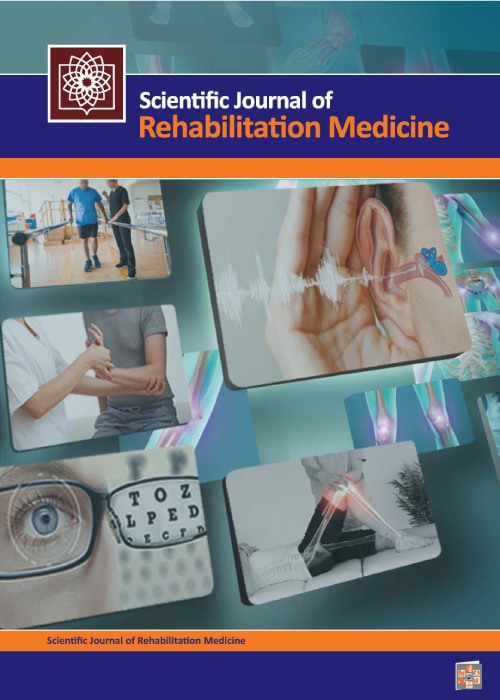Relationships between Functional Movement Assessments and Elements of Sensorimotor Function in Collegiate Athletes with Chronic Ankle Instability
Author(s):
Article Type:
Research/Original Article (دارای رتبه معتبر)
Abstract:
Background And Aims
In patients with Chronic Ankle Instability (CAI), biomechanical alterations and sensorimotor dysfunctions have been reported. However, little is known about the relationships between functional movement patterns and sensorimotor function in people with CAI. The purpose of the present study was to examine the relationships between movement dysfunctions associated with functional movement patterns and sensorimotor function in collegiate athletes with CAI.Materials And Methods
A total of 40 male collegiate athletes with CAI volunteered to participate in the study. Three functional movements including double limb squat, double limb squat with heel lift, and single limb squat were conducted for assessing movement dysfunctions and scored using Fusionetics algorithms. Sensorimotor function was assessed using static and dynamic postural control, ankle dorsiflexion ROM, ankle joint proprioception, and ankle muscle strength. Pearson product correlations and multiple linear regression were used to examine the relationships between functional movement assessments and sensorimotor function.Results
The results showed that collegiate athletes with CAI had poor (20.1±14.1%), moderate (52.3±17.4%), and good (80.1±19.4%) movement efficiency in single leg squat, double limb squat, and double limb squat with heel lift, respectively. Specific movement errors such as Heel of Foot Lifts (50 %) and Knee Valgus (70 %) were common among CAI participants during the double limb squat and single leg squat, respectively. There were significant correlations between functional movement errors and sensorimotor functions (pConclusion
Collegiate athletes with CAI had movement dysfunctions during functional movement patterns. There were correlations between functional movement errors and select sensorimotor outcomes. Some specific movement dysfunctions can be predicted by examining sensorimotor outcomes. Keywords:
Language:
Persian
Published:
Scientific Journal of Rehabilitation Medicine, Volume:7 Issue: 2, 2018
Pages:
138 to 147
magiran.com/p1860362
دانلود و مطالعه متن این مقاله با یکی از روشهای زیر امکان پذیر است:
اشتراک شخصی
با عضویت و پرداخت آنلاین حق اشتراک یکساله به مبلغ 1,390,000ريال میتوانید 70 عنوان مطلب دانلود کنید!
اشتراک سازمانی
به کتابخانه دانشگاه یا محل کار خود پیشنهاد کنید تا اشتراک سازمانی این پایگاه را برای دسترسی نامحدود همه کاربران به متن مطالب تهیه نمایند!
توجه!
- حق عضویت دریافتی صرف حمایت از نشریات عضو و نگهداری، تکمیل و توسعه مگیران میشود.
- پرداخت حق اشتراک و دانلود مقالات اجازه بازنشر آن در سایر رسانههای چاپی و دیجیتال را به کاربر نمیدهد.
In order to view content subscription is required
Personal subscription
Subscribe magiran.com for 70 € euros via PayPal and download 70 articles during a year.
Organization subscription
Please contact us to subscribe your university or library for unlimited access!



